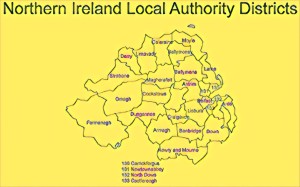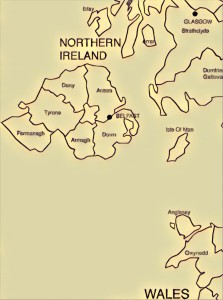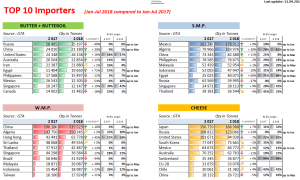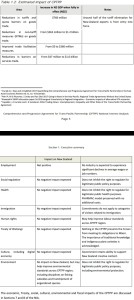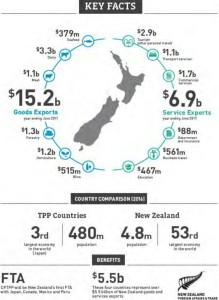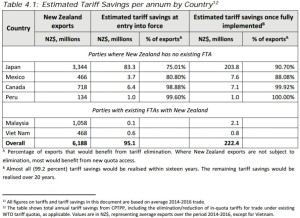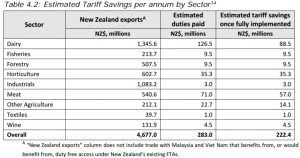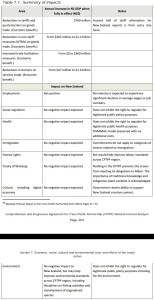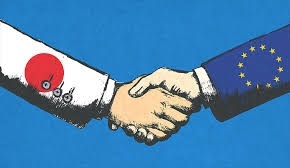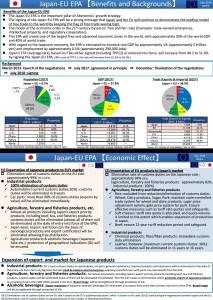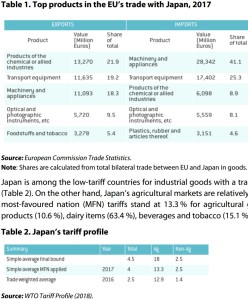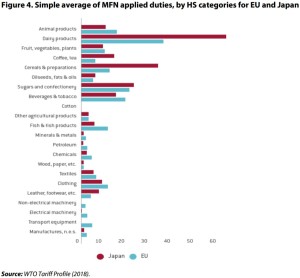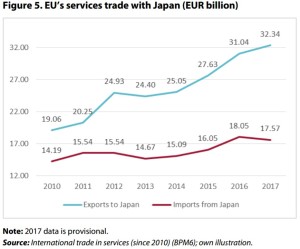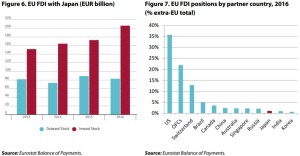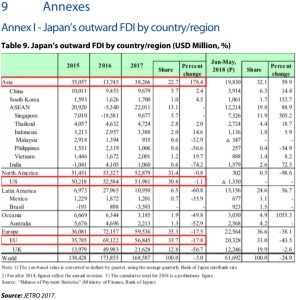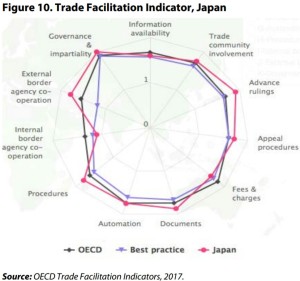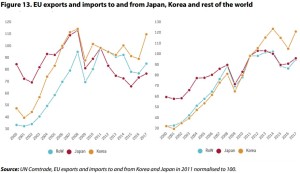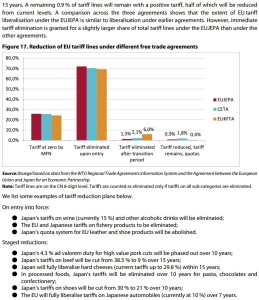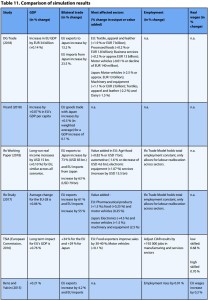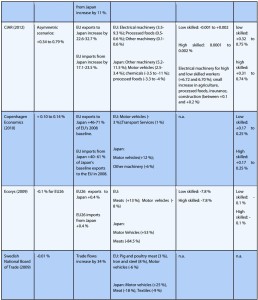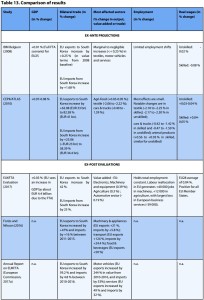All the below tweets are in English.
取り急ぎ、日本時間5月26日13時頃までの標記関連ツイート(直接関係無いと言えるものを含む)を以下貼っておきます。
敢えて一日本国民として思うことを言うとすれば、
〇 (もちろん時間の長さが全てではありませんが)アメリカ大統領夫妻が日本だけに立ち寄り3泊4日も滞在することに表れている、過去に無いほどの良好な日米関係を、日本国民としては素直に喜ぶべきである。
〇 (対外問題においては慎むべき場合もあるものの)民主主義下において国内の野党やマスコミが様々な意見を発信するのは、原則としては健全である。他方、直接関係の無い者が口出しするのは、個人的には好まない。この件で言えば、練られた思考や一定の節度の下でのアメリカ及び日本の野党やマスコミによる意見はOK、日米以外の政治家やマスコミなどによる意見はそのハードルが随分上がる、と考えています。
If I dare to say as a Japanese citizen my thought about the below tweets through around 1:00 pm, May 26, I think:
〇 Japanese people had better be genuinely glad to see the good U.S.-Japan relationship as never before, which is told by the fact that a U.S. President and his first lady come just to Japan and stay for as many as four days / three nights (, while the length of the time is not all that matters); and
〇 Under democracy, it is basically healthy that opposition political parties and the mass media in each country send out their opinions (, while they should sometimes refrain in the field of foreign affairs). On the other hand, I basically do NOT like all the other foreign people doing the same things. Regarding the President’s visit, OK would be opinions by American and Japanese opposition parties and mass media based on well-crafted studies and with restraint. On the other hand, the bars of the opinions by non-American and non-Japanese people are basically raised much, of course.
U.S. President Donald Trump arrived at Mobara Country Club, south of Tokyo, for a round with the Japanese Prime Minister Shinzo Abe. pic.twitter.com/p7pYQVwqIG
— The Voice of America (@VOANews) May 26, 2019
U.S. President Donald Trump has greeted U.S. troops in Alaska on Friday while on his way to a state visit in Japan. pic.twitter.com/MkwDMozSF1
— The Voice of America (@VOANews) May 25, 2019
U.S. President Donald Trump and First Lady Melania Trump left on Friday, May 24 for a highly anticipated trip to Japan. https://t.co/jtrL6si0MP pic.twitter.com/OYS1AReCgA
— The Voice of America (@VOANews) May 24, 2019
【SNS更新】令和初の国賓としてお迎えしたトランプ大統領と千葉でゴルフです。新しい令和の時代も日米同盟をさらに揺るぎないものとしていきたいと考えています。https://t.co/IDHo2DprA5https://t.co/B1LjQoedjR pic.twitter.com/AnMODIPWk5
— 首相官邸 (@kantei) May 26, 2019
In Alaska with our GREAT TROOPS, departing shortly for Japan! pic.twitter.com/9a72TMftpN
— Donald J. Trump (@realDonaldTrump) May 25, 2019
President Trump previews his trip to Japan this weekend: pic.twitter.com/mWCpY80kVK
— The White House (@WhiteHouse) May 24, 2019
President Trump and the First Lady are staying in Japan as the first State Guests of the new era “Reiwa”! TOKYO SKYTREE welcomes their historic visit with a special lighting inspired by the Stars and Stripes. Akie and I are looking forward to seeing them tomorrow ! pic.twitter.com/yMohHzRgWf
— 安倍晋三 (@AbeShinzo) May 25, 2019
From May 25 to 27, TOKYO SKYTREE will welcome President Trump and the First Lady’s State Visit to Japan with a special lighting inspired by the Stars and Stripes. #TOKYOSKYTREE #POTUS #MakeAllianceEvenGreater pic.twitter.com/S5B7u8Hzvh
— MOFA of Japan (@MofaJapan_en) May 24, 2019
Abe, Japan set to roll out the GREAT greeting for Trump https://t.co/GuyXkkmcMb pic.twitter.com/LyJAsJUvF3
— The Cambodia (@the_cambodia) May 25, 2019
US President Trump heads to Japan to meet with the new emperor, as well as PM Shinzo Abe, amid rising tensions between the US and China over trade pic.twitter.com/cpqMm9rpGx
— The Ankara Times (@TheAnkaraTimes) May 25, 2019
Trump begins his 4-day visit to Japan
Read @ANi story | https://t.co/xkrMq3qOK5 pic.twitter.com/qcG7nwzQB9
— ANI Digital (@ani_digital) May 25, 2019
Japan rolls out friendship carpet for Trump https://t.co/UN8pnJmjV4 pic.twitter.com/iFNtniHI2m
— The Globe and Mail (@globeandmail) May 25, 2019
Golf and sumo on Trump's Japan agenda https://t.co/N3hGXpkQQ4 pic.twitter.com/ggJzYSqrYc
— FirstPressNG (@firstpressNg) May 25, 2019
#Trump set to visit #Japan to honor new Emperor
for more: https://t.co/0fUPbWOQtz pic.twitter.com/dFKlRRKgvo
— CGTN (@CGTNOfficial) May 25, 2019
US President Donald Trump has arrived in Japan for a state visit that will make him the first world leader to meet the country's new emperor. https://t.co/AvS02galyN pic.twitter.com/ZeBQvoq7pV
— China Daily (@ChinaDaily) May 25, 2019
U.S. military helicopters hit the links ahead of Trump’s visit
The U.S. military on May 22 conducted a fly-through operation over Tokyo ahead of U.S. President Donald Trump’s visit to Japan later this week.
Full video here: https://t.co/QtFuy2tSNj pic.twitter.com/HayAMJjM6B
— Asahi Shimbun AJW (@AJWasahi) May 23, 2019
Trump arrives in Japan, toasts business leaders https://t.co/ZsDjH9F2e7
— The Washington Times (@WashTimes) May 25, 2019
Trump the 'greatest president' since Lincoln, actor Jon Voight says https://t.co/2cYsajH5KN
— The Washington Times (@WashTimes) May 25, 2019
President Trump and Japanese Prime Minister Abe greet each other ahead of a round of golf. pic.twitter.com/VxLRSVtJNA
— The Hill (@thehill) May 26, 2019
Native Son @carlnoltesf: Taking a fresh look at Japan, an ancient nation over the horizon. Like a lot of kids who grew up in #SF, I used to go to the beach on clear days and stare out at the ocean, wondering what was over the horizon. https://t.co/rFKFQcA5Z8 pic.twitter.com/fKIdIZlTe1
— San Francisco Chronicle (@sfchronicle) May 26, 2019
The Latest: Trump and Abe meet at golf course near Tokyo. https://t.co/Z9HoS25dRw pic.twitter.com/fUU00pKIBV
— Miami Herald (@MiamiHerald) May 26, 2019
WATCH: Pres. Trump addresses media on South Lawn before leaving for Japan. https://t.co/TjHdwyHpDp
— ABC News (@ABC) May 24, 2019
President Trump departs for his 3-day visit to Japan, where he'll meet with Japanese PM Abe. pic.twitter.com/ylMmO8sOdL
— MSNBC (@MSNBC) May 24, 2019
Trump greets U.S. troops in Alaska while on his way to Japan pic.twitter.com/vsVnEf50Zu
— TicToc by Bloomberg (@tictoc) May 25, 2019
Golf course motorcade featuring President Trump and Prime Minister Abe all the way at the front pic.twitter.com/l0GReJ5CNM
— Jennifer Epstein (@jeneps) May 26, 2019
President Trump is flying to his golf game with Prime Minister Abe pic.twitter.com/4tH1udVC8N
— Jennifer Epstein (@jeneps) May 25, 2019
Trump and Abe are golfing together for the fifth time in 2.5 years and the second time in the past month or so. pic.twitter.com/33zF3wQUwS
— Jennifer Epstein (@jeneps) May 26, 2019
The Trumps are Japan-bound. Next stop is to refuel in Alaska. pic.twitter.com/1yrkdH36Qa
— Jennifer Epstein (@jeneps) May 24, 2019
Pres Trump is greeted by Prime Minister Abe on arrival at Mobara Country Club in Chiba, Japan, for a round of golf. They drove off in a golf cart, PM Abe at the wheel, @POTUS in the seat next to him. Security personnel behind them. pic.twitter.com/eqJPORQg0T
— Mark Knoller (@markknoller) May 26, 2019
By my count, it's the 6th time Pres Trump has played golf with Prime Minister Abe and the 2nd time in Japan. pic.twitter.com/YeKgDcWClx
— Mark Knoller (@markknoller) May 26, 2019
President Trump is in Japan to meet with Prime Minister Abe and newly crowned Emperor Naruhito, attend a sumo wrestling match and have an imperial dinner banquet, as trade tensions loom in the background. https://t.co/Ia51cM0tJN pic.twitter.com/hVC79YcSDn
— CNN (@CNN) May 25, 2019
President Trump and Prime Minister Shinzo Abe's friendship day starts with tweet underscoring lingering divides https://t.co/ph8Yql9nG6 pic.twitter.com/gVtmK06ovw
— CNN Politics (@CNNPolitics) May 25, 2019
President Trump downplays North Korea's short-range missile tests, putting him at odds with his Japanese hosts just hours before his meeting with Prime Minister Abe https://t.co/xAr755nGCg pic.twitter.com/LeN97NINaU
— CNN Breaking News (@cnnbrk) May 25, 2019
Prime Minister Abe greets President Trump on the greens at Mobara Country Club in Chiba, Japan. The two just finished breakfast and are hitting the links. pic.twitter.com/fV4tuuo3Ya
— Betsy Klein (@betsy_klein) May 26, 2019
President Donald Trump and first lady Melania Trump arrived in Japan for a visit that will make him the first world leader to meet the country’s new emperor. https://t.co/0sOUl6txkx
— USA TODAY Politics (@usatodayDC) May 25, 2019
The latest in Playbook: President Trump is big in Japanhttps://t.co/zfxYsdKMAa pic.twitter.com/GsdrSzAtg2
— POLITICO Playbook (@playbookplus) May 25, 2019
Modi’s landslide election win will help cement India's special partnership with Japan, which he will visit next month for the G20 summit. The Japan-India entente is a central pillar of the Trump administration's strategy for a “free and open Indo-Pacific.” https://t.co/zJ9bhIaiNK
— Brahma Chellaney (@Chellaney) May 24, 2019
Analysis: Trump goes to Tokyo. There will be pomp and photo ops. https://t.co/oJSlHyeUmq
— The Washington Post (@washingtonpost) May 25, 2019
Trump arrives for ceremonial visit to Japan, but Iran and North Korea also loom https://t.co/BiFWn8wrRM
— The Washington Post (@washingtonpost) May 25, 2019
Trump arrives in Japan as a potential military conflict in the Middle East looms https://t.co/Fogch15WYM pic.twitter.com/W5VEOb3S24
— CBS News (@CBSNews) May 25, 2019
President Trump landed in Tokyo on Saturday, the first of two trips here in coming weeks, on a largely ceremonial visit that marks a high point in Japan’s efforts to woo the unpredictable American leader. https://t.co/vjyG4umayD
— Los Angeles Times (@latimes) May 25, 2019
President Trump opened a state visit to Japan on Saturday by needling the country over its trade imbalance with the United States. https://t.co/Xh79pjD1yb pic.twitter.com/KfmLj9riIb
— Star Tribune (@StarTribune) May 25, 2019
President Trump is expected to notch 36,000 miles of travel this summer, including two trips each to Japan and Europe https://t.co/xT3I6gb8Nd pic.twitter.com/SyfoXZh67V
— CNN Politics (@CNNPolitics) May 24, 2019
As President Trump heads to Japan, there's an ominous message from North Korean leader Kim Jong Un expressing his displeasure with the President. CNN's Brian Todd has more. https://t.co/0zvMGv60Mi pic.twitter.com/vKUCsfJmvL
— The Situation Room (@CNNSitRoom) May 24, 2019
Japanese media say Prime Minister Shinzo Abe is considering a visit to Iran next month amid rising tension between Tehran and Washington. Abe reportedly hopes to serve as mediator between the U.S. and Iran https://t.co/eOSWP0tzeR
— Wisconsin Project (@WisconsinProj) May 24, 2019
Glad to be in Japan to meet with officials prior to President Trump’s historic visit. Looking forward to discussing the strong bilateral relationship and regional issues.
— John Bolton (@AmbJohnBolton) May 23, 2019
President Trump told Japanese business leaders that he also wanted to address the U.S. trade deficit with Japan during his stay https://t.co/g8jB0rcLyU
— The Wall Street Journal (@WSJ) May 25, 2019
Trump spoke for 45 minutes at event to announce aid to farmers to offset China trade war, which turned into staff testimonial over Trump's demeanor yesterday and then news conf on Iran, Japan, etc. Farmers join long line of people unwittingly used as background props by Potus. pic.twitter.com/oR2Uy3jIEy
— David Nakamura (@DavidNakamura) May 23, 2019
Good thread but question is whether Abe is getting enough for obsequiousness. Trump pulled out of TPP and Iran deal, enacted steel/aluminum tariffs, reversed new Treasury sanctions on NK, threatening auto tariffs and “cost plus 50”, undercutting on severity of DPRK weapons tests. https://t.co/lCugfpr9H4
— David Nakamura (@DavidNakamura) May 26, 2019
Trump boasts that he'll be Japan's "guest of honor" at "biggest event they've had in over 200 years" ahead of visit https://t.co/9t9z6L0fSd pic.twitter.com/qHQ2hmgADh
— The Hill (@thehill) May 23, 2019
Japan's Shinzo Abe set to treat Trump to front row seats at a sumo tournament pic.twitter.com/VZv2ehrsOw
— Reuters Top News (@Reuters) May 23, 2019
Plans for President @realDonaldTrump to observe the ancient Japanese sport of sumo wrestling are raising security issues. https://t.co/0BoWWk8LbO
— AP Sports (@AP_Sports) May 21, 2019
Trump to give 'Trump Award' for top sumo wrestler during Japan trip https://t.co/yO57N6Pmb6 pic.twitter.com/Pa5pyebcYY
— New York Post (@nypost) May 23, 2019
At a loss word words https://t.co/c7ekDm2KWX
— Rochelle Kopp (@JapanIntercult) May 18, 2019
Trump boasts of his Japan trip: "I am the guest. Meaning the United States is the guest. But Prime Minister Abe said to me very specifically: you are the guest of honour. There is only one guest of honour. You are the guest of honour."
— Daniel Dale (@ddale8) May 23, 2019
President Trump and Prime Minister Shinzo Abe golf amid U.S.-Japan trade tensions: https://t.co/B7lOioujlN
— The Denver Post (@denverpost) May 26, 2019
Melania Trump wears a $3,900 Calvin Klein dress featuring postcards for her flight to Japan https://t.co/jWcksWhmRg pic.twitter.com/Kef7naVIcD
— موسوعة المعرفة (@maosoo3h) May 24, 2019
Melania Trump wears a £2,615 dress to fly to Japan with husband Donald https://t.co/OXfrVrtGhr pic.twitter.com/RJNa25Qeba
— Daily Express (@Daily_Express) May 24, 2019
Trump brushes off North Korea's launch of 'some small weapons' https://t.co/14VUsB87FN
— The Guardian (@guardian) May 26, 2019
Trump and Abe tee off amid US-Japan trade tensions https://t.co/H5zyLFOtZN pic.twitter.com/REca6wM8Kc
— CP24 (@CP24) May 26, 2019
Trump to golf with Abe and present trophy at Sumo tournament Sunday. On Tues. he will tour the JS Kaga, a flat-deck Japanese helicopter carrier that could one-day support the F-35B Lighting IIhttps://t.co/NH6veKLyo0
— Stars and Stripes (@starsandstripes) May 26, 2019
National Security Adviser John Bolton said North Korea will be among the first issues discussed by President Donald Trump and Japanese Prime Minister Shinzo Abe during Trump's visit to Japan. https://t.co/RhYXSCMvIJ
— Stars and Stripes (@starsandstripes) May 25, 2019
https://twitter.com/USRealityCheck/status/1132432137070755841
Abe as Trump's flatterer in chief @katierogers @motokorich https://t.co/B59Ko0Soro
— Michael Tackett (@tackettdc) May 24, 2019
Ringside at a sumo wrestling tournament, a trophy for Trump to give the winner, an imperial dinner banquet and golfing. Trump's on his way to meet Japan's leader Shinzo Abe. Abe isn't the first world leader to put Trump in the spotlight – is it flattery or is it strategy? pic.twitter.com/Rk16UuBW1W
— Christopher C. Cuomo (@ChrisCuomo) May 25, 2019
"Offering high honors, golf and the chance to present a “Trump Cup” at a sumo wrestling championship, Japanese Prime Minister Shinzo Abe will continue a years-long campaign that so far appears to have spared Japan from far more debilitating U.S. actions" https://t.co/zA5VUmMySo
— Jonathan Lemire (@JonLemire) May 24, 2019
I’m old enough to remember when Trump — a man who ran attack ads about his opponent’s recklessness with national security — actually turned his dining room at Mar-a-Lago into an open air Situation Room with Prime Minister Abe of Japan. https://t.co/lf1sg9hFEX
— Brian Klaas (@brianklaas) May 25, 2019
Anti-#Trump protesters march through Tokyo ahead of state visit #Japan pic.twitter.com/rIKh56Cxpo
— Ruptly (@Ruptly) May 25, 2019
The president took to Twitter while he was in Japan to respond to the Friday ruling, tweeting that the ruling was made by "another activist Obama appointed judge"
— The Salt Lake Tribune (@sltrib) May 26, 2019
Trump is no genius about using Section 301 to crush competition.
In the 1980s, the US used the same trick to crush Toshiba and the Japanese semiconductor industry
<China Huawei> pic.twitter.com/XP6H39Hfhx
— Economics Geopolitics Tech (@EconGeopolTech) May 26, 2019
Great day with Prime Minister @AbeShinzo of Japan. We played a quick round of golf by the beautiful Potomac River while talking Trade and many other subjects. He has now left for Japan and I am on my way to Wisconsin where a very large crowd of friends await! pic.twitter.com/ZvyxJ8sIw2
— Donald J. Trump (@realDonaldTrump) April 27, 2019
https://twitter.com/NevadaJack2/status/1122660999960469505

